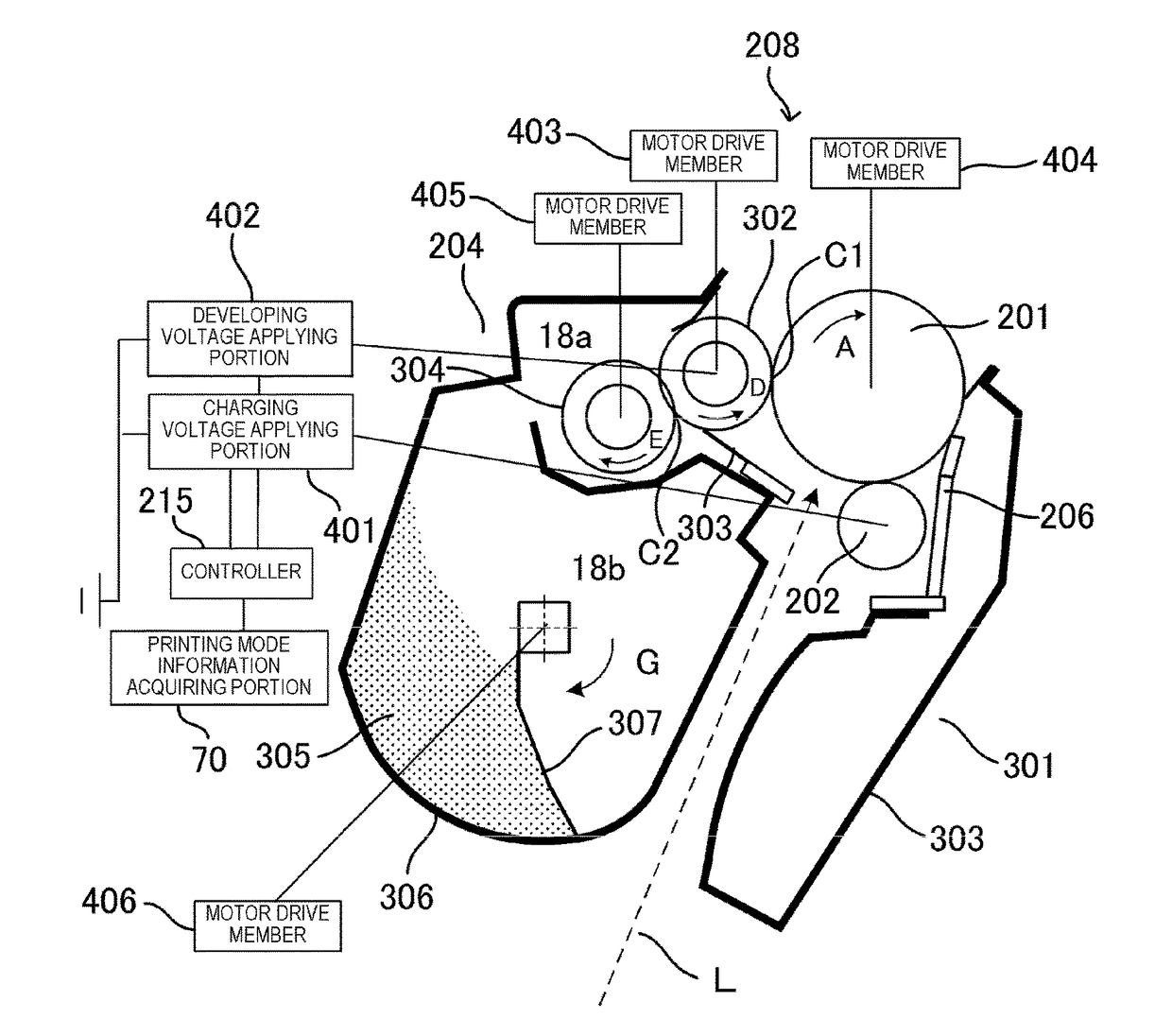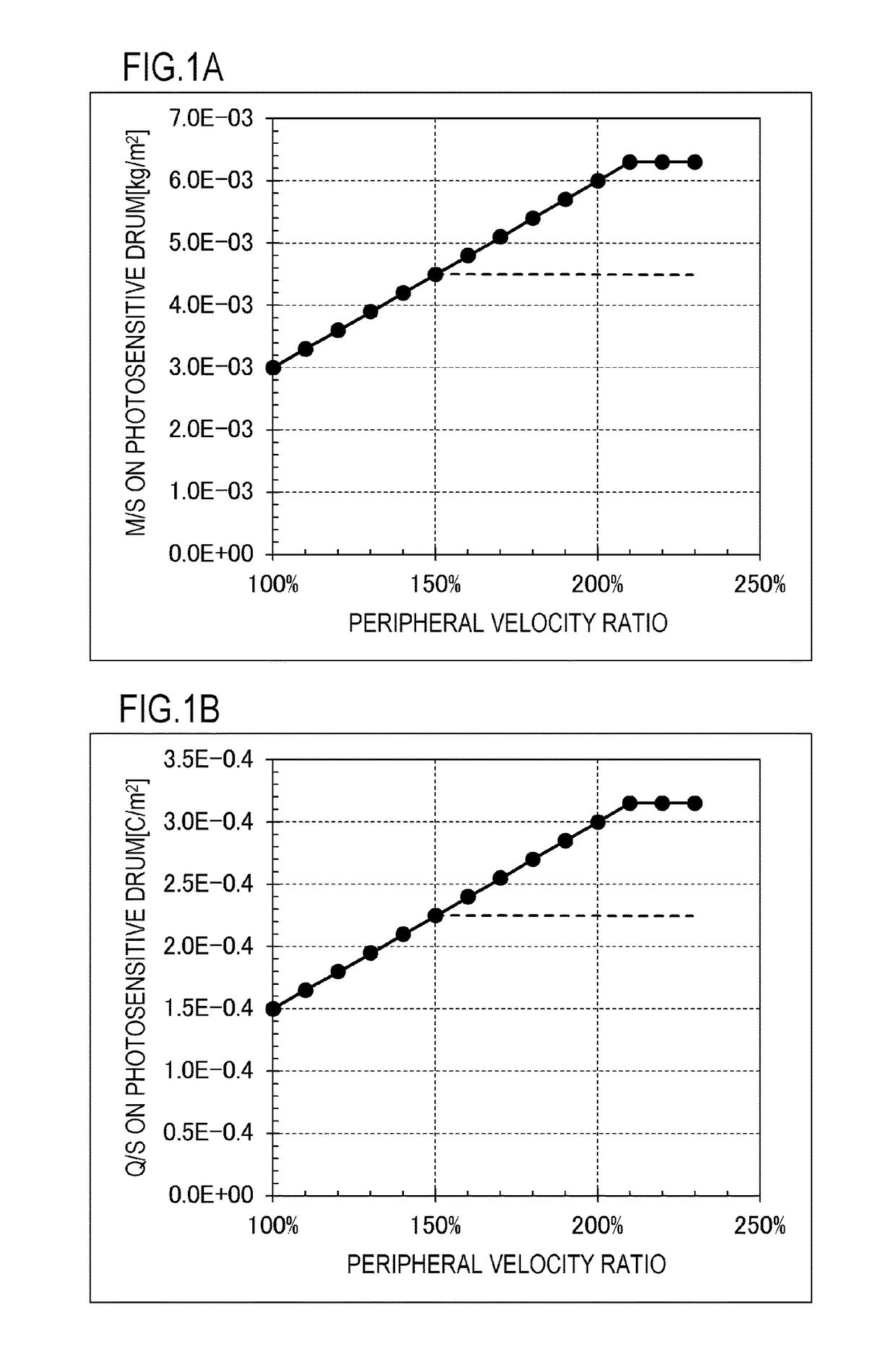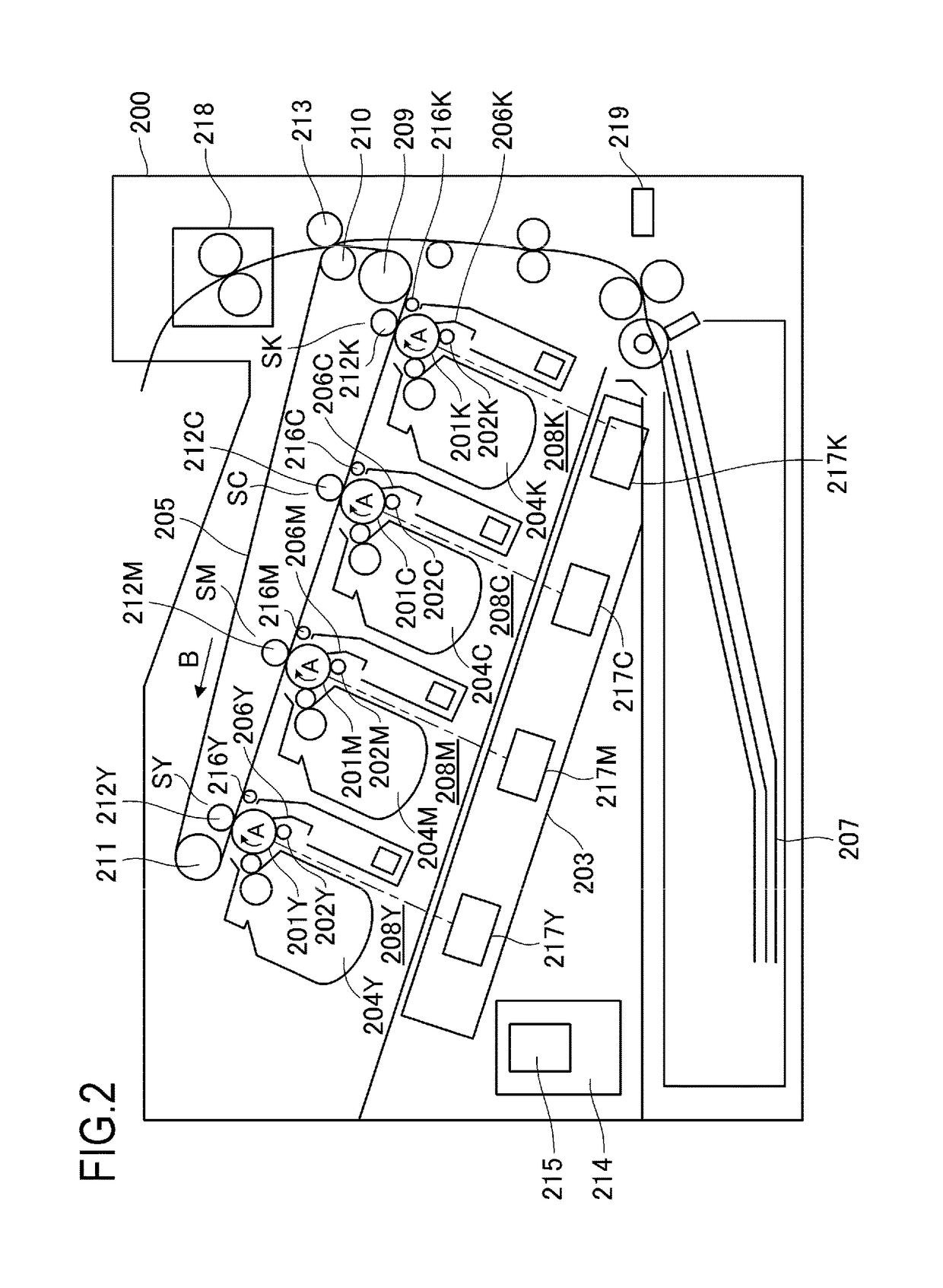Image forming apparatus
a technology of forming apparatus and forming tube, which is applied in the direction of electrographic process apparatus, instruments, optics, etc., can solve the problems of preventing the intended image from being obtained, the image density of the image is not uniform, etc., and achieves the effect of increasing the tinge selection range and increasing the amount of toner
- Summary
- Abstract
- Description
- Claims
- Application Information
AI Technical Summary
Benefits of technology
Problems solved by technology
Method used
Image
Examples
first embodiment
[0042]An image forming apparatus according to the present embodiment has two image formation modes: an image formation mode A for obtaining normal image density; and an image formation mode B for obtaining high density or increasing a tinge selection range by changing a peripheral velocity ratio between a photosensitive drum as an image bearing member and a developing roller as a developer bearing member. Each image formation mode has a different ratio of rotational speed (a peripheral velocity ratio) between a photosensitive drum and a developing roller particularly under a condition of forming a solid black image. In the image formation mode A, with respect to a development contrast formed by an electrostatic latent image formed on the photosensitive drum and a developing bias applied to the developing roller, all of the toner on the developing roller is developed onto the photosensitive drum. In the image formation mode B, the peripheral velocity ratio between the photosensitive ...
second embodiment
[0078]In the first embodiment described above, when performing a high-density mode, an operating condition which enables toner to remain on a developing roller even during printing of a high printing pattern such as solid black is adopted to realize stabilization of density and tinge while maintaining supplying performance of toner to the developing roller. A second embodiment of the present invention is configured such that, when an electrified charge amount of toner changes due to a change in the toner accompanying environmental conditions or specifications, peripheral velocity ratio control corresponding to the change is performed so that similar effects are obtained regardless of changes in conditions and the like. Specifically, an image forming apparatus according to the second embodiment includes a sensor 219 as detecting means configured to detect temperature and humidity (refer to FIG. 2). In addition, a CPU 315 assumes a low temperature, low humidity environment when the te...
third embodiment
[0086]FIG. 7 is a schematic sectional view of an image forming apparatus according to a third embodiment of the present invention. The image forming apparatus 200 according to the third embodiment includes, in addition to the configuration of the image forming apparatus according to the first embodiment, a recording material type detection sensor 220 which detects a width of the recording material 207 in a sub-scanning direction and a recording material type detection sensor 221 which detects a width of the recording material 207 in a main scanning direction. In the third embodiment, only differences from the first and second embodiments will be described. Matters not described in the third embodiment are similar to those described in the first and second embodiments.
[0087]FIG. 8 is a block diagram showing driving and high-voltage control of the photosensitive drum 201 and the developing roller 302 of the image forming apparatus according to the third embodiment. In FIG. 8, signals ...
PUM
 Login to View More
Login to View More Abstract
Description
Claims
Application Information
 Login to View More
Login to View More - R&D
- Intellectual Property
- Life Sciences
- Materials
- Tech Scout
- Unparalleled Data Quality
- Higher Quality Content
- 60% Fewer Hallucinations
Browse by: Latest US Patents, China's latest patents, Technical Efficacy Thesaurus, Application Domain, Technology Topic, Popular Technical Reports.
© 2025 PatSnap. All rights reserved.Legal|Privacy policy|Modern Slavery Act Transparency Statement|Sitemap|About US| Contact US: help@patsnap.com



